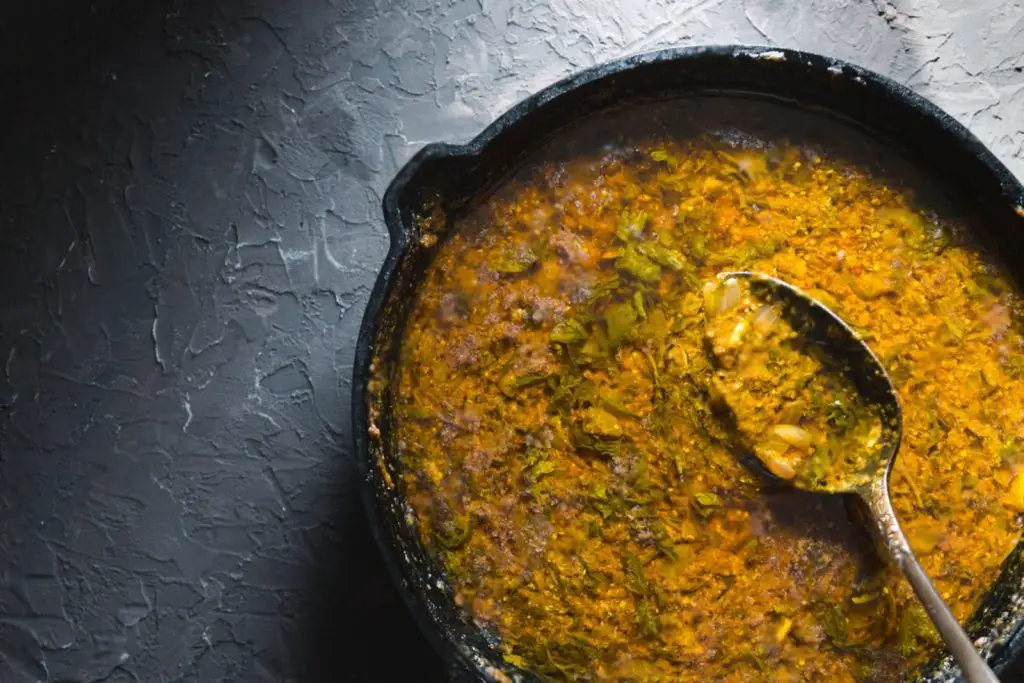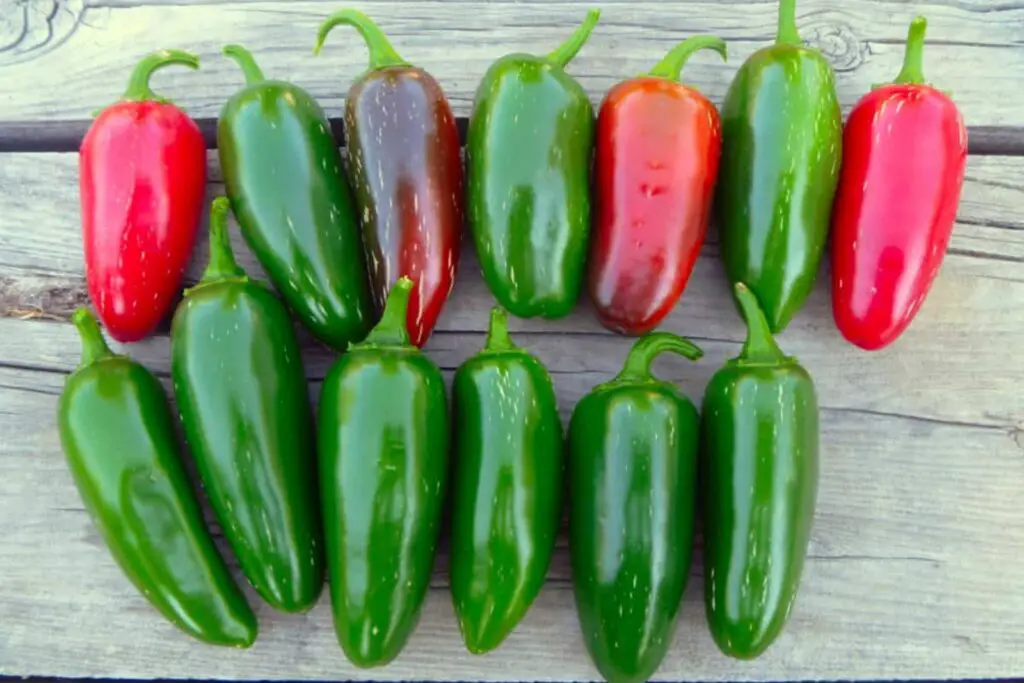
Mint, with its refreshing aroma and distinct flavor, is a versatile herb that adds a delightful touch to a wide range of dishes and beverages. Whether you have an abundant supply of fresh mint from your garden or want to extend the lifespan of store-bought mint, freezing is a great method to preserve its vibrant essence. By properly freezing mint, you can ensure that you always have this aromatic herb on hand to elevate your culinary creations.
Here are the steps to freeze mint:
Step 1: Harvest and clean the mint leaves
Before freezing mint, it’s crucial to start with fresh and healthy leaves. Following the right harvesting and cleaning process will ensure that the mint retains its quality during freezing. Here’s a detailed explanation of each step:
- Choose healthy leaves: Select mint leaves that are vibrant and free from any signs of damage, browning, or discoloration. Look for leaves that have a rich green color and a robust aroma. Avoid leaves that are wilted or have spots, as they may not freeze well.
- Cut above a set of leaves: When harvesting mint, use a pair of clean, sharp scissors or pruning shears to cut the stems just above a set of leaves. By doing this, you encourage the plant to continue growing and produce more leaves. Avoid cutting the stems too close to the ground, as it may hinder the plant’s growth.
- Rinse under cool water: Once you have harvested the mint, it’s essential to remove any dirt, dust, or debris that may be clinging to the leaves. Gently rinse the leaves under cool running water. This will help eliminate any impurities and ensure that the mint is clean and ready for freezing.
- Pat dry or use a salad spinner: After rinsing, gently shake off any excess water from the mint leaves. You can either pat them dry with a clean kitchen towel or use a salad spinner to remove the moisture more efficiently. Ensuring that the leaves are adequately dried helps prevent ice crystals from forming during freezing, which can affect their texture and flavor.
Can I freeze mint stems along with the leaves?
It is not recommended to freeze mint stems along with the leaves. The stems of mint are relatively tougher and fibrous compared to the leaves, and freezing them can result in a change in texture and flavor. To preserve the best quality of the mint leaves, it is advisable to separate the leaves from the stems before freezing.
Step 2: Decide on the freezing method
When it comes to freezing mint, there are two primary methods you can choose from freezing individual leaves or freezing them in ice cubes. Each method offers distinct advantages depending on how you plan to use the mint. Here’s a detailed explanation of each method:
- Freezing individual leaves: This method is ideal if you anticipate using the mint in recipes that require whole or chopped leaves. By freezing the leaves individually, you have more flexibility when it comes to portioning and using them later. For example, if you plan to add mint to salads, soups, or main dishes, freezing the leaves individually allows you to easily retrieve the desired amount without thawing an entire clump of frozen leaves.
- Freezing mint in ice cubes: This method is particularly convenient if you intend to use the mint primarily for adding a refreshing touch to beverages such as iced tea, lemonade, or cocktails. Freezing mint in ice cubes allows you to conveniently portion out small amounts of mint for individual servings, ensuring that the flavor is evenly distributed.
Follow steps 3 and 4 below for specific details on each freezing method.
Step 3: Freeze individual leaves
Freezing mint leaves individually is a convenient method if you plan to use them in recipes that call for whole or chopped leaves. Here’s a detailed explanation of the steps involved:
- Prepare the mint leaves: After harvesting and cleaning the mint leaves, ensure they are dry. Excess moisture can lead to the formation of ice crystals, affecting the texture and flavor of the frozen leaves. Pat them dry with a clean kitchen towel or use a salad spinner to remove any remaining moisture.
- Lay out the leaves: Line a baking sheet or a tray with parchment paper. Place the mint leaves in a single layer on the prepared tray, making sure to space them apart. This prevents the leaves from sticking together during the freezing process.
- Freeze the leaves: Transfer the tray with the mint leaves to the freezer. Allow them to freeze for approximately two hours or until they become firm. The freezing time may vary depending on the thickness of the leaves and the efficiency of your freezer.
- Package the frozen leaves: Once the mint leaves are frozen, remove the tray from the freezer. Transfer the frozen leaves to a freezer-safe bag or an airtight container. Ensure that the container is suitable for long-term freezer storage to prevent freezer burn and maintain the quality of the mint leaves.
- Remove excess air and seal: Before sealing the bag or container, remove as much air as possible. Excess air can cause freezer burn and affect the texture and taste of the leaves. Press the bag gently or use a vacuum sealer to eliminate any trapped air. For a container, press a sheet of plastic wrap directly onto the surface of the leaves to minimize air exposure, then seal the container tightly.
- Label and date the package: To easily identify the frozen mint leaves and keep track of their storage time, label the package with the date and contents. This step ensures that you can use the mint leaves within their recommended storage period.
Step 4: Freeze mint in ice cubes
Freezing mint in ice cubes is a convenient method if you want to add a refreshing touch to beverages such as iced tea, lemonade, or cocktails. Here’s a detailed explanation of the steps involved:
- Prepare the mint leaves: After harvesting and cleaning the mint leaves, tear or chop them into smaller pieces. This helps release their flavors and ensures even distribution within the ice cubes.
- Fill the ice cube tray: Take an ice cube tray and fill each compartment about two-thirds full with the chopped mint leaves. This allows space for expansion when freezing and ensures that each ice cube will contain an adequate amount of mint.
- Add water: Carefully pour water into the ice cube tray, ensuring that the mint leaves are fully covered. The water will freeze and encase the mint leaves, preserving their freshness and flavor.
- Freeze the tray: Place the ice cube tray in the freezer and let it freeze completely. The freezing time typically ranges from two to four hours, but it may vary depending on the temperature of your freezer and the size of the ice cubes.
- Transfer the ice cubes: Once the mint ice cubes are frozen solid, remove the tray from the freezer. Gently twist or tap the tray to release the cubes. Transfer the mint ice cubes to a labeled freezer bag.
- Remove excess air and seal: Squeeze out any excess air from the bag containing the mint ice cubes to prevent freezer burn and maintain their quality. Ensure that the bag is tightly sealed to prevent moisture or odors from entering.
- Store in the freezer: Place the sealed bag of mint ice cubes back in the freezer. Store them at a temperature of 0°F (-18°C) or below to maintain their freshness and flavor.
Can I freeze mint in water instead of using ice cubes?
Freezing mint in water instead of using ice cubes is not recommended. Mint leaves contain high water content, and freezing them in water can result in a loss of flavor and aroma. Additionally, the water can dilute the mint’s intensity when thawed, affecting its overall taste. It is best to freeze mint leaves individually or in ice cubes without the addition of water for optimal preservation and flavor.
Step 5: Store and use frozen mint
Proper storage and usage of frozen mint are essential to preserve its flavor and quality. Here’s how to store and use frozen mint effectively:
- Store in the freezer: After freezing the mint using either the individual leaves or ice cube method, it’s crucial to store it in the freezer at a temperature of 0°F (-18°C) or below. This ensures that the mint remains in a frozen state, preventing spoilage and maintaining its freshness and flavor.
- Label and date: To keep track of the storage time and easily identify the frozen mint, label the package or container with the date of freezing. This information will help you use the mint within its recommended storage period for optimal quality.
- Storage duration: While frozen mint can retain its flavor for up to six months, it’s best to use it within three months for the best taste. Over time, frozen herbs may gradually lose some of their aroma and potency, so using them within this timeframe ensures the highest quality in your culinary preparations.
- Thawing: When you need to use frozen mint, there are a couple of ways to proceed. For recipes that require whole leaves or chopped mint, remove the desired amount from the freezer and thaw it in the refrigerator. Place the frozen mint in a covered container or on a plate to catch any liquid as it thaws. Allow it to defrost slowly in the refrigerator, which can take a few hours or overnight, depending on the quantity and thickness of the leaves.
- Using mint without thawing: In some recipes, such as smoothies, sauces, or dressings, you can use frozen mint directly without thawing. The freezing process helps to preserve the essential oils and flavors of the mint, and adding it directly to these recipes can provide a vibrant and refreshing taste. Simply measure the desired amount of frozen mint and add it directly to the recipe, adjusting to taste.
Other related questions
How do I defrost frozen mint?
To defrost frozen mint, remove the desired amount from the freezer and place it in the refrigerator. Allow the mint to thaw slowly in the refrigerator, which can take a few hours overnight, depending on the quantity and thickness of the leaves. Place the frozen mint in a covered container or on a plate to catch any liquid as it thaws. Once thawed, use the mint in your recipes as desired, whether it’s for garnishing dishes, adding to beverages, or incorporating it into culinary creations.
How long can I store frozen mint in the freezer?
Frozen mint can be stored in the freezer for up to six months. However, for the best flavor and quality, it is recommended to use it within three months. Over time, frozen herbs like mint may gradually lose some of their aroma and potency. Properly sealed and labeled containers or bags in a freezer set at 0°F (-18°C) or below will help maintain the freshness of the mint during its storage period.
Can I refreeze previously thawed mint?
It is generally not recommended to refreeze previously thawed mint. Freezing and thawing mint alters its texture and can affect its quality. When you thaw mint, moisture is released, and refreezing it can result in the formation of ice crystals and degradation of flavor. It is best to use thawed mint immediately or incorporate it into recipes rather than refreezing it. To avoid waste, consider freezing mint in smaller portions that align with your intended usage.
How do I know if my frozen mint has gone bad?
You can tell if your frozen mint has gone bad by observing its appearance, aroma, and texture. If the mint leaves appear discolored, wilted or have developed freezer burn, it may indicate spoilage. Additionally, if the mint has a strong off-putting odor or tastes significantly different from fresh mint, it could be a sign of deterioration. Lastly, if the texture of the frozen mint is mushy or slimy, it is likely no longer suitable for use. Trust your senses and discard any frozen mint that shows signs of spoilage to ensure food safety.
Can I use frozen mints with fresh ones?
Yes, you can use frozen mint alongside fresh mint in recipes. Frozen mint can be a convenient option when fresh mint is not readily available. It can still impart its characteristic flavor and aroma to dishes, drinks, or sauces. However, keep in mind that the texture of frozen mint may differ from fresh mint, so it’s important to consider the specific recipe and adjust the quantity and method accordingly. Experiment with the combination of fresh and frozen mint to achieve the desired taste and presentation in your culinary creations.
Can I freeze mint in olive oil for future use?
Freezing mint in olive oil is not recommended. Freezing herbs in oil can create an anaerobic environment that promotes the growth of harmful bacteria, including botulism. To preserve mint, it is best to freeze the leaves individually or use the ice cube method without adding oil. This ensures the mint retains its freshness and flavor while maintaining food safety.
Can I freeze mint sprigs for decorative purposes?
Yes, you can freeze mint sprigs for decorative purposes. Freezing mint sprigs can help preserve their vibrant green color and maintain their shape, making them ideal for garnishing purposes. Simply place the mint sprigs in an airtight container or freezer bag, and store them in the freezer until needed. However, remember that the leaves texture may become slightly softer after thawing, so it’s best to use them for decorative purposes rather than consumption.
Can I freeze mint for making homemade mint extract?
Yes, you can freeze mint for making homemade mint extract. Freezing the mint leaves helps to preserve their flavor and aroma, which is essential for making mint extract. After freezing the mint leaves using the recommended methods, you can use them directly from the freezer to infuse them in a solvent like alcohol to create your homemade mint extract.
Can I freeze mint to use in homemade herbal teas?
Yes, you can freeze mint to use in homemade herbal teas. Freezing mint leaves helps preserve their freshness and flavor, making them a convenient option for brewing herbal teas. After freezing, you can either thaw the mint leaves before using them in your tea or directly steep them in hot water to extract their aromatic and refreshing qualities. Enjoy the benefits of frozen mint in your homemade herbal teas for a delightful and soothing beverage.
Can I freeze mint leaves for garnishing dishes?
Freezing mint leaves for garnishing dishes is not recommended. Freezing alters the texture of mint leaves, causing them to become wilted and lose their vibrant appearance. Fresh mint leaves are best for garnishing dishes as they provide a crisp and visually appealing touch.
Can I freeze mint to use in homemade herbal bath products?
Freezing mint for use in homemade herbal bath products is not recommended. The freezing process can alter the texture and appearance of mint leaves, making them less suitable for use in bath products. It is preferable to use fresh or dried mint leaves for making herbal bath products to ensure their optimal fragrance and effectiveness.
Can I freeze mint for making infused water?
Yes, you can freeze mint for making infused water. Freezing mint helps to preserve its flavor, making it a convenient option for adding refreshing minty notes to infused water. Simply freeze the mint leaves using the recommended methods and add them directly to water or other beverages to infuse their delightful taste. Enjoy the convenience of frozen mint for creating flavorful and invigorating infused water.
Can I freeze mint to use in homemade ice cream or sorbet?
Yes, you can freeze mint to use in homemade ice cream or sorbet. Freezing mint helps retain its flavor and aroma, which are essential for achieving a delicious minty taste in frozen desserts. After freezing the mint leaves using the recommended methods, you can incorporate them directly into your ice cream or sorbet mixture during the preparation process for a refreshing and flavorful result.
Can I freeze mint to make flavored ice cubes for beverages?
Yes, you can freeze mint to make flavored ice cubes for beverages. Freezing mint leaves in ice cubes is a convenient way to add a refreshing touch to your drinks. Simply freeze the mint leaves using the recommended methods, place them in ice cube trays, fill them with water, and freeze them until solid. Use these mint-infused ice cubes to enhance the flavor and appearance of your beverages, such as iced tea, lemonade, or cocktails.
Can I freeze mint to use in homemade pesto or sauces?
Yes, you can freeze mint to use in homemade pesto or sauces. Freezing mint leaves helps preserve their flavor and aroma, making them suitable for adding to pesto or sauces. After freezing the mint leaves using the recommended methods, you can blend them with other ingredients to create flavorful and aromatic pesto or incorporate them into sauces for a delightful minty twist.
Can I freeze mint to preserve its medicinal properties?
Freezing mint may affect its medicinal properties to some extent. While freezing can help preserve the flavor and aroma of mint, certain compounds responsible for its medicinal benefits may degrade or change during the freezing process. For preserving the maximum medicinal properties of mint, it is often recommended to use fresh mint or opt for alternative preservation methods like drying or making herbal extracts.








